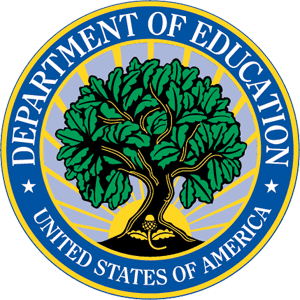When Shelly honored me with the opportunity to write a guest post about teaching at-risk youth in the USA, it took me a while to gather my thoughts. What could I share with the world that hasn't already been on National television or the BBC? Slowly, I came to the conclusion that my viewpoint may be a bit skewed by the fact that I live in the USA. At the NECC conference (a gigantic conference of all things related to Educational Technology) last June, I discovered that even educators in Canada, our closest English-speaking neighbor, were fuzzy on education policies and practices in the US.
 I currently serve as a Computer Lab teacher and Technology Teacher Leader (TTL) at a large (about 600 students) K-6th grade elementary school in West Philadelphia, PA. Our school has made AYP once since President George W. Bush signed the No Child Left Behind Act in 2001, which classifies us as a 'failing school.' If you are a bit fuzzy on this legislation and AYP, it will be addressed later in the post.
I currently serve as a Computer Lab teacher and Technology Teacher Leader (TTL) at a large (about 600 students) K-6th grade elementary school in West Philadelphia, PA. Our school has made AYP once since President George W. Bush signed the No Child Left Behind Act in 2001, which classifies us as a 'failing school.' If you are a bit fuzzy on this legislation and AYP, it will be addressed later in the post.Education as the Great Equalizer
One aspect of our system that separates us from many parts of the world is the fact that education from age 6 to age 18 is free for everyone. This freedom ties in perfectly with our Democratic ideals that state that- theoretically-anyone can be anyone they want, attain anything they want and anyone can even be President. In fact, education is not only free, it's mandatory until age 16. In addition-in theory-both girls and boys, whether black, white, green or purple, are educated equally and provided equal opportunities to achieve. As a woman, I could not imagine being denied the simple right to an education, or imagine risking my life to attend school as some girls do in countries like Afghanistan. Even famed author Frank McCourt believed, as a young man, that a good education in the US would pull him up in the world and away from his poor, troubled Irish roots. By the way, if you have not read his book Teacher Man, do it. As soon as possible.Of course, this is all in theory.
The purpose of this post is not to pick apart the Education system in the US for all of its inequalities and shortcomings that deny many children the opportunity to succeed and achieve their dreams. For that, you should pick up a copy of Jonathan Kozol's revolutionary book Savage Inequalities or read his account of teaching in a Boston public school in Death at An Early Age. Reading Kozol's books before I moved to Philadelphia in 2002 and during my early years in the public school system here prepared me more than any course at any university for what I would encounter.
This is a quick video that describes the conditions in many urban public schools.
I have blogged about racism, segregation & education and about the conditions in which my students learn here and here.
No Child Left Behind: an overview
For those of you not graced with the privilege of knowing what No Child Left Behind (NCLB) is all about, here's a quick overview.NCLB is a piece of legislation created by former President George W. Bush in 2001 with the goal of making drastic changes and reforms to the broken and failing American education system. The legislation has four 'pillars':
- Stronger Accountability: President Bush's main goal with NCLB was close the achievement gap between poor and minority students and their wealthier counterparts. This translates into schools being required to make Adequate Yearly Progress (AYP) in order to maintain their autonomy. Usually this AYP is decided by comparing the percentage of students scoring 'proficient' on state standardized tests from year to year. Should a school not achieve this stated percentage for 5 or more years, it may be restructured. As an example, my school must have 47% of our students reading at a proficient level. As of our test scores from last spring, 17% of our students currently do. If we do not make enough gains (based on the standardized test in the Spring) we may be completely restructured (again).
- More Freedom for States and Communities: Under NCLB, state and local governments were given more control of how Federal money is distributed. Schools and districts with a large population of underserved, "disadvantaged" students can use additional money, called Title I funds, on Professional Development, after school programs, Educational Technology and other school-based or district-based needs. Most schools in Philadelphia (not all) qualify for these extra funds.
- Proven Education Methods: President Bush felt it very important to ensure that districts and schools employ scientifically proven methods to increase student achievement. This often means that schools cannot find funding for alternative interventions unless they fit this definition. When searching for and indicating interventions for, specifically, Special Education students, teachers can only use those programs that fit the 'scientifically proven' classification. The result has been a huge influx of companies releasing these kinds of products and marketing them to schools. This is not to say that these programs don't work, but it can be limiting.
- More Choices for Parents: A new aspect of NCLB, this pillar allows parents whose children attend a low or under-performing school to transfer their child to a better school. My school is required to release a list of available schools every year where parents can choose to send their children instead of our school. By law, the district must pay for the child's busing to their new school. The result--a failing school loses its best students and families to other schools and continues failing, and money is diverted from schools to bus companies. This pillar has also created a huge debate over the school voucher program, through which parents at failing schools can use public funds to pay for their child to attend any public or private school of their choice.
What About EdTech?
So what implications does NCLB have for educational technology and student achievement?The accountability aspect of the legislation has placed a huge focus on standardized testing, since these are the tools for measuring AYP. The result has been a change in teaching and learning. You have probably heard the phrase "teaching to the test" a million times. Teachers often feel they don't even have time to teach enough reading and math to prepare students for the tests, so you can imagine the stress of trying to learn a new tool or experiment with new methods of teaching in the classroom, nevermind taking the time to do Project Based Learning with technology. The biggest winners in the accountability pillar? The testing companies.
While freedom with Federal dollars has definitely help districts, this does not change anything about the gaping chasm between local funding in rural or urban schools and suburban schools. Most schools in the United States are funded through local property taxes. In states like New Jersey, with some of the highest property taxes on the East Coast, it's no wonder that schools in New Jersey are performing above and beyond schools in neighboring states. This is not to say that Philadelphia public schools do not have technology available to their students. There are many schools with every classroom equipped with an Interactive White Board (IWB) and many Middle/High Schools have access to laptop carts with enough computers for a whole class. Just having the technology, however, does not ensure student achievement or successful integration. "Teaching to the test" does not allow for the creativity that these tools can foster, and many teachers lack proper Professional Development for these tools due to funding and planning. Often these tools are installed or introduced with little or no training on how to use them.
Since many cutting-edge technologies and/or instructional programs have not been scientifically tested, the kinds of technologies that are used as interventions to differentiate instruction are drill-and-practice software like Read 180, Fast Forward, FASTT Math, or Quick Reads, or web-based programs like First in Math and Study Island. Many software companies have been raking in cash due to the high demand for these kinds of softwares. I often joke that "I'm in the wrong business," because the real money is in intervention software for schools! While these programs have been proven to increase student achievement on standardized tests, they do not support technology integration into the curriculum. Many teachers mistakenly believe that they use technology in the classroom effectively just because they stick a kid on the computer to use one of these programs.
By giving parents the option to pull their child out of a failing school, it sends parents the wrong message. "Don't try to make things better, just let the school fail and get your kid the %&# out of there!" Not only does this practice pull money away from schools to pay for busing these students, but the schools will not get better without parent involvement and advocacy. If you make it a habit to move students out and close schools, it will also burden the receiving schools with higher enrollment. In Philadelphia, our School Reform Commission (we have no School Board) and our Superintendent, Arlene Ackerman, plan to close failing schools and re-open them with all new staff. The idea is, if you continue to fail, you do not deserve Federal dollars, you deserve to close. With these kinds of clouds looming over schools' heads, who has time to focus on technology integration and Professional Development?
Give EdTech a Chance
The worst thing about all of this? The achievement gap is not closing. Sure, test scores are going up, but do test scores prepare our students for college and/or the job market?I worry:
- "Will my students know how to send and receive email?"
- "Will my students know how to create an online identity that will not damage them later in life?"
- "Will my students have the basic word processing skills to correctly type that paper or resume?"
- "Will my students know how to use social media to collaborate with others?"
A teaching model that effectively integrates technology into teaching and learning can both prepare students for the real world and standardized tests to boot. Here are some examples of how technology can help close the achievement gap on standardized tests without "teaching to the test":
- Teaching good writing skills through quick and easy editing and publishing.
- Teaching various reading skills through reading classmates' blogs and comments.
- Giving students a love for reading and writing by creating a truly authentic audience.
- Engaging students through differentiated instruction by using various technology tools to teach to students' strengths.
- Engaging students with Science and Math through collaborative projects and authentic projects using real-time data.
I am proud to be a public school teacher here in Philadelphia. I am not a martyr, I am not a hero. I am, along with my esteemed colleagues, a career professional entrusted with preparing my young students for successful and fulfilling adult lives. A system as large as ours here the US will never be perfect. We must do what we can with what we have and be advocates for our children and their families.
US Dept. of Ed image courtesy of Wikimedia Commons
All NCLB information from US Dept. of Ed website








0 comments:
Post a Comment